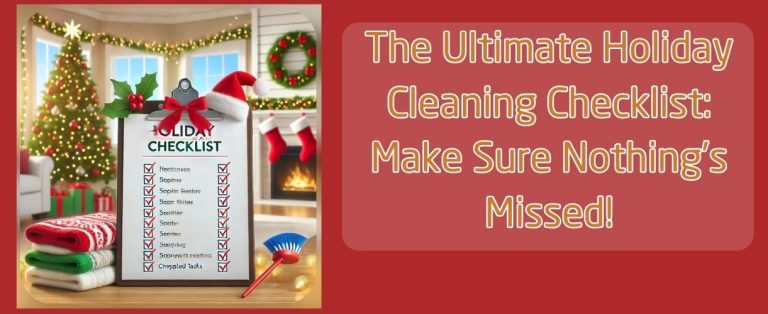Table of Contents
Have you ever wondered if there’s a foolproof way to sail through a building and pest inspection with minimal stress? Are you keen to discover what inspectors look for so you can address any minor hiccups before they become massive headaches? If you’ve asked yourself these questions, you’re not alone. Preparing for an inspection might sound daunting, but it doesn’t have to be. With the right approach, you can tackle it step by step and show off your home in the best possible light.
In this blog post, we’ll explore five helpful tips to prepare your property for a thorough building and pest inspection. We’ll begin by looking at why these inspections matter and touch on the common debate over a building inspection before or after an offer. Plus, we’ll discuss how to prepare for a pest inspection by clearing clutter and granting easy access. From minor repairs to documentation, from communicating with your inspector to scheduling wisely, you’ll soon feel confident about your next big inspection day.
Whether you’re in Brighton or anywhere else in Australia, the steps below will help you spot potential problems early on and keep potential buyers happy. A thorough end of lease cleaning is also highly recommended, especially if you’re preparing the property for handover or sale—it ensures the space looks its best and meets inspection standards. By the end of this read, you’ll know exactly how to make your property inspection-ready. So, let’s jump right in and learn how to prepare for a pest inspection and building check like a seasoned pro.
Why Building and Pest Inspections Matter
Inspections reveal hidden issues before contracts are signed. For sellers, they confirm the property’s condition; for buyers, they highlight potential repairs—helping both avoid unexpected, costly surprises.
Comprehensive Building & Pest Inspections
Building & Pest Inspections
Inspections cover all key areas—interior, exterior, roof, subfloor, and outbuildings—checking for structural issues, timber rot, termites, water damage, and hidden infestations. They give buyers clarity, help sellers fix problems early, and ensure smoother property transactions.
Whether you arrange one before or after making an offer depends on market conditions and your comfort level, but the value remains the same: inspections reveal issues early, prevent disputes, and protect your investment.
How to Prepare for a Pest Inspection
Of course, a property inspection isn’t just about structural integrity; it’s also about making sure pests aren’t quietly setting up shop. So, how to prepare for a pest inspection most effectively? Firstly, envision yourself as the inspector. Inspectors need to see the entire property—from the attic to the sub-floor—and get a clear view of walls, foundations, and any wooden framework. You can make their job easier by keeping your home clutter-free, neat, and accessible.
Clearing and Decluttering: First Steps
Imagine rummaging through a cluttered garage or stepping over piles of boxes in a storage room. Not only is that a real pain for inspectors, but it can also lead them to overlook key issues. Start by removing items from around the walls, windowsills, and beneath sinks. If you have bulky furniture blocking access to certain corners, shift it so the inspector can get a proper look. This helps them spot any signs of termites, rodents, or other pests you definitely want to keep away.
When your place is tidy, inspectors can complete their work quickly and accurately. It’s also a good idea to tidy up the yard, clear away stray rubbish, and remove any rotting wood or piles of mulch that could attract pests. Whether we’re talking about a free-standing house or a townhouse, pests often set up residence in places that go unnoticed for a long time, such as neglected shed corners or stacked timber near the fence line. Clearing these areas shows you’re diligent about the property and decreases the chance of surprises cropping up during the inspection.
Ensuring Easy Access to All Areas
Another essential step in how to prepare for a pest inspection is to confirm that every nook and cranny is accessible. Think of it as rolling out the welcome mat for your inspector. Make sure attic access points aren’t blocked and remove personal belongings from the basement or crawl space entrance, if you have one. Inspectors typically look under sinks, in closets, and even behind large appliances.
If there are locked sheds, make sure you have keys readily available. The easier you make it for them to conduct a thorough review, the faster your inspection will proceed, and the more confident you can feel about its accuracy. As an added plus, this preparation signals to prospective buyers that you’re serious about maintaining the property.
Tip 1: Address Minor Repairs Early
Minor Repairs Matter
Small issues like creaky floorboards, peeling paint, or loose fixtures can stand out in a building and pest inspection. Fixing them early shows good maintenance and prevents bigger problems.
What to Check
- Cracks in walls, damp patches, or damaged seals
- Loose railings, wobbly doors, or broken fixtures
- Roof leaks, missing shingles, or loose deck boards
Common Red Flags
Inspectors often find termite damage, mould, leaks, plumbing issues, or structural cracks. Tackling these early boosts buyer confidence and helps ensure a smoother inspection.

Tip 2: Document Everything
Documentation might sound dull, but it’s crucial for every successful property transaction. A neatly organised folder filled with receipts, certificates, and warranties can be your greatest ally during an inspection. This folder records your property’s maintenance history, telling a clear story: “Here’s every critical task I’ve completed, so you know this place is in good shape.” Buyers and inspectors alike appreciate that transparency.
Past Repairs, Renovations, and Certificates
Whenever you fix a leaky roof, install new plumbing, or upgrade your electrical system, it’s wise to keep copies of the invoices and warranties. Buyers feel more comfortable when they see evidence of professional work. This step also validates that the improvements meet Australian regulations and standards. If you’ve had any termite or pest treatments, be sure to keep these certificates handy as well.
Renovations—like remodelling a kitchen or adding a deck—usually come with building permits or approvals from the local council. If you can show these documents, you’ll reassure buyers and inspectors that your work is above board. This thorough record-keeping can help settle questions instantly. Instead of rummaging through drawers while an inspector waits, you can confidently point to your folder and verify that everything’s in order.
Buying a House Building Inspection: Key Paperwork
If you’re the buyer in this scenario, it’s essential to review not just the inspection report but other paperwork, too. Before finalising the sale, go through the property’s maintenance records, termite-clearance letters, and renovation permits. These documents help you confirm the structure’s condition and avoid future disputes.
Besides showing clear ownership of any upgrades, these documents guide you in planning upcoming repairs or adjustments. For instance, if the previous owner replaced the roof ten years ago, you’ll know when it might be due for another check. With all that evidence lined up, you can negotiate from a position of strength and boost your peace of mind about your new investment.
Photographic Evidence with Geotags and Timestamps
You might be wondering if you can get photographic proof as part of your inspection report. The answer is yes—many inspectors now provide raw photos, complete with embedded geotags and date/time stamps. These details can be invaluable, offering not only visual confirmation of issues but also rock-solid documentation about precisely when and where each photo was taken.
Simply let your inspector know you’d like these included. Having this photographic evidence on hand can make future negotiations smoother and bolster your records for insurance, council approvals, or warranty claims. It’s just one more way to bring transparency and reassurance to the buying or selling process.
What You’ll Receive After a Building & Pest Inspection
Inspection reports are designed to be clear and easy to follow—like a property’s report card. A typical report includes:
- Executive summary: Highlights any major issues upfront.
- Checklists or tables: Breaks down each area (rooms, roof space, exteriors, plumbing, electrical, outbuildings).
- Photo evidence: Images with details to show concerns clearly.
- Comments & recommendations: Plain-language notes with practical next steps.
- Supporting documents: Sometimes includes certificates or approvals for transparency.
Pro tip: Many inspectors provide sample reports online—reviewing one beforehand helps you know what to expect and prepare your paperwork.
Tip 3: Communicate with Your Inspector
Another vital part of how to prepare for a pest inspection—and building inspections in general—is open communication with the inspector. Inspectors are there to help you understand any concerns, not to scare you with complicated jargon. Reputable inspectors are more than happy to have a quick chat before they begin, so they know what areas you want to focus on. In return, they’ll detail how they plan to conduct the job.
What to Look for in a Home Inspector
While “what to look for in a home inspector” might sound straightforward, there’s more to the question than expertise. You want someone who combines strong industry knowledge with an approachable personality. Check if they have proper certifications or memberships with Australian industry bodies and see how long they’ve been in business. You might even look for reviews or ask for references from previous clients.
A seasoned inspector can adapt their skills to different property types, whether an older Queenslander construction or a modern townhouse. They should also provide a toolkit of tests, from moisture meters and thermal imaging for spotting hidden leaks to specialised pest-detection methods. If your inspector meets these criteria, you’ll likely get a thorough, reliable result.
Questions to Ask Before Booking
Before booking your inspection, don’t be shy about asking questions. Will they check both structural and pest risks in a single visit, or is it a two-part service? How quickly can they deliver the report? Will it be a digital file, or do you get a printed copy? And if minor issues pop up, are they able to advise you on simple fixes? These matters can affect the overall convenience and the value you receive.
Another point worth clarifying is how detailed the final report will be. Some inspectors provide short summaries, while others present in-depth, photo-heavy documents that highlight each and every concern. Ask also about insurance coverage; credible inspectors carry professional indemnity insurance, which protects you if a major defect is missed. It never hurts to gather all the info up front so you can choose the inspector who ticks all your boxes.
How to Contact a Local Building Inspector
Getting in touch with a local building inspector is simple and worthwhile:
- Search certified inspectors through trusted industry directories.
- Check reviews on independent platforms to see client feedback.
- Reach out directly by phone, email, or online enquiry forms.
- Request a quick consultation to assess their communication style and expertise.
Taking the initiative helps clear up uncertainties and builds rapport for a smooth, stress-free inspection process.
Tip 4: Prepare the Exterior and Landscaping
While the building’s interior is crucial, don’t overlook the outside space. A property’s exterior can also undo an otherwise promising inspection if there are drainage problems, poorly maintained gardens, or pests nesting in overgrown shrubs. Proper landscaping and yard maintenance are simpler than many people think, and they can make a huge difference to a building and pest inspection.
Removing Debris and Potential Pest Hiding Spots
Pests love tall grass, rotting logs, and piles of leaves. These spots offer shelter and quick access to your home’s structure, especially if moisture has built up in these areas. By regularly mowing your lawn, trimming bushes, and clearing away debris, you’ll not only give off a polished look but also lower the risk of pest infestation.
If you store firewood outside, make sure it’s stacked neatly and kept off the ground. Termites can set up colonies in damp timber piles, then migrate to your home. The same goes for compost heaps—keep them a bit further from the house and turn the pile frequently to discourage nesting pests. Show the inspector that your yard is free from obvious hazards, and you’re more likely to receive a positive report.
Checking Drainage and Moisture Issues
Drainage & Timing Your Inspection
Proper drainage is key to avoiding mould, termites, and structural issues. Clear gutters, direct downpipes away from the foundation, and fix any pooling water with drains or re-grading.
When scheduling an inspection, choose a time when the property is unoccupied so inspectors can work thoroughly. Sellers should avoid clashes with open homes, while buyers should book early in the process to allow time for negotiations if issues arise.
Coordinating with agents and keeping communication clear helps everyone stay organised and ensures a smoother inspection process.
Conclusion
Ultimately, preparing for a building and pest inspection in Brighton is about giving your property every advantage. While it might seem like a tedious process, taking the time to clear clutter, address minor repairs, organise your documents, and provide easy access for inspectors can make a big difference. Whether you’ve debated the benefits of a building inspection before or after making an offer, or you’re keen to know what to look for in a home inspector, being proactive always pays off.
These inspections aren’t just formalities—they offer a clear view of a property’s structural integrity and any hidden pest issues. Why a Building & Pest Inspection Matters
A combined building and pest inspection assesses the property’s interior, exterior, roof, subfloor, and roof void, checking for defects and pest activity. The report provides clear, independent insights—helping buyers, sellers, and landlords make informed decisions and avoid costly surprises. By following the tips shared here—such as tackling small fixes early, preparing paperwork in advance, and scheduling with intention—you pave the way for a seamless, stress-free experience. Buyers can feel confident, sellers can present their homes at their best, and real estate professionals can avoid last-minute surprises.So, if you’re gearing up for a building and pest inspection in Brighton or nearby, remember that smart preparation is the key. Ready to ensure a smooth property transaction? Book your professional building and pest inspection in Brighton today and take the first confident step toward a successful sale or purchase.





